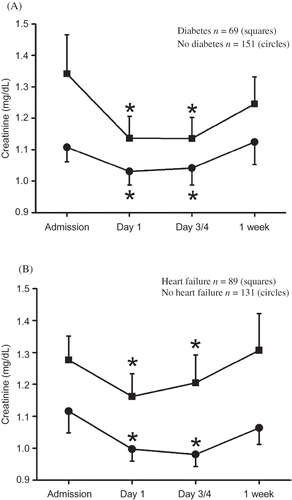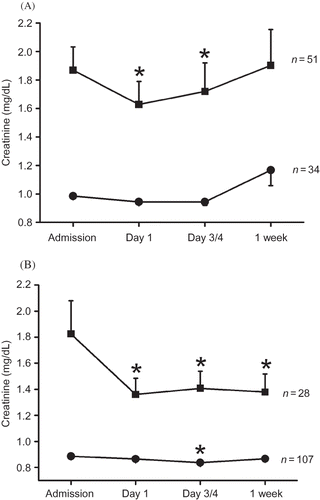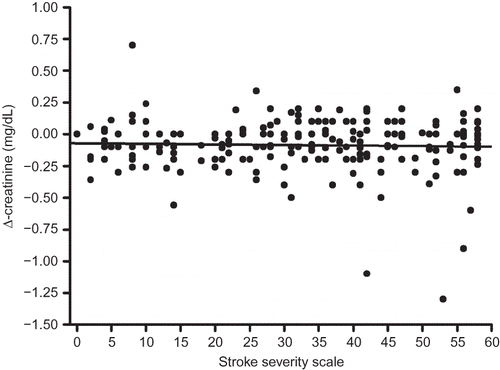Figures & data
Table 1. Medical history of subjects admitted with ischemic stroke (n = 220).
Table 2. Data of subjects with ischemic stroke and normal (≤1.2 mg/dL) or elevated (>1.2 mg/dL) serum creatinine at admission.
Figure 1. Serum creatinine in patients with ischemic stroke and elevated (>1.2 mg/dL, squares, n = 62) or normal creatinine (≤1.2 mg/dL, circles, n = 158) after admission. Data are presented as means ± SEM. Note: *Denotes p < 0.001 versus baseline, ANOVA and Fisher LSD.
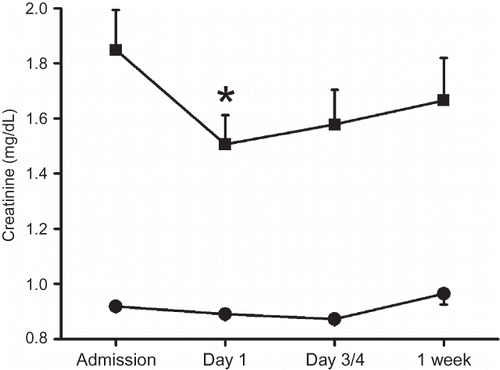
Figure 2. Maximum changes in serum creatinine (Δ-creatinine) after admission for ischemic stroke in patients with elevated (>1.2 mg/dL, gray bars) or normal creatinine (≤1.2 mg/dL, black bars). Obtained from male and female subjects, patients with and without diabetes mellitus (DM), and patients with and without heart failure (HF). Data are presented as means ± SEM.
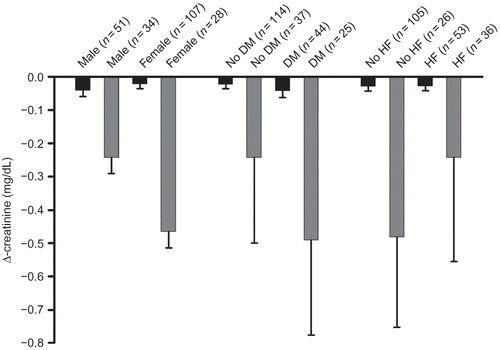
Table 3. Comparison of subgroups to assess the effect of diabetes and heart failure (HF) on the creatinine course stratified according to elevated or normal creatinine (ANOVA and Fisher LSD post hoc test).
Figure 3. Serum creatinine of patients (A) with or without diabetes and (B) with or without heart failure. Data are presented as means ± SEM. Note: *Denotes p < 0.05 versus baseline, ANOVA and Fisher LSD.
